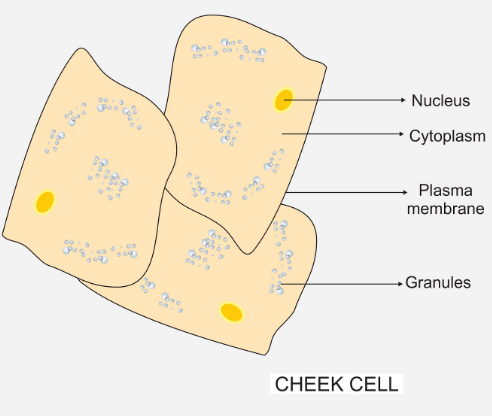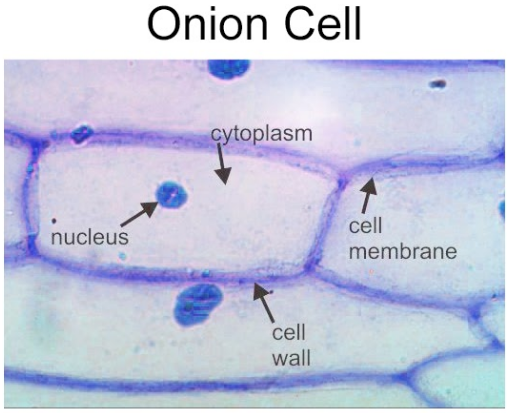
To distinguish microscopically between cheek cell and onion cell mount, one should look for the presence or absence of
(a) Mitochondria
(b) Plastids
(c) Cell membrane
(d) Nucleus
Answer
441.3k+ views
Hint: Human cheek cells have different characters as compared to the onion cell as they are both taken from the different organisms. One is taken from the humans while the other is taken from the plant resulting in a change in structure and function.
Complete answer:
Difference between cheek cell and onion cell mount
Additional information
-The cheek cells constitute a well-defined nucleus with a nuclear membrane. They are found to be an actively dividing cell thus it becomes easier to observe under the microscope. While in the case of the onion cells the nucleus is not well defined.
-the human cheek cells are obtained by scraping the cheek from the inside with the help of a toothpick or a sterilized needle. While in the case of the onion cell they can be obtained from the peeling of the transparent layer present on the onion.
Note:
The cheek cell and the onion cell are both epithelial cells that can be obtained easily. They are both transparent and thus can be stained easily. They both have various cell organelles, cell membrane, and nucleus except plastids or chloroplast, which is absent in the case of the human cheek cell.


Complete answer:
Difference between cheek cell and onion cell mount
| Cheek cell | Onion cell |
| It is an animal cell. | It is a plant cell. |
| A cell obtained from the epithelial tissue of the oral cavity in humans. | A Single layered epidermal cell obtained from the onion bulb. |
| The cell wall is absent. | The cell wall is composed of cellulose. |
| The cell shape is somewhat rounded. | The cell has a brick-like appearance. |
| Cells have a well-defined nucleus and several small vacuoles. | Cells have a small nucleus but a large vacuole. |
| The plastids are absent since it is an animal cell. | The plastids are present. |
| They did not undergo the process of photosynthesis. | They undergo the process of photosynthesis. |
Additional information
-The cheek cells constitute a well-defined nucleus with a nuclear membrane. They are found to be an actively dividing cell thus it becomes easier to observe under the microscope. While in the case of the onion cells the nucleus is not well defined.
-the human cheek cells are obtained by scraping the cheek from the inside with the help of a toothpick or a sterilized needle. While in the case of the onion cell they can be obtained from the peeling of the transparent layer present on the onion.
Note:
The cheek cell and the onion cell are both epithelial cells that can be obtained easily. They are both transparent and thus can be stained easily. They both have various cell organelles, cell membrane, and nucleus except plastids or chloroplast, which is absent in the case of the human cheek cell.


Recently Updated Pages
Master Class 11 Economics: Engaging Questions & Answers for Success

Master Class 11 Business Studies: Engaging Questions & Answers for Success

Master Class 11 Accountancy: Engaging Questions & Answers for Success

Master Class 11 English: Engaging Questions & Answers for Success

Master Class 11 Computer Science: Engaging Questions & Answers for Success

Master Class 11 Maths: Engaging Questions & Answers for Success

Trending doubts
Which one is a true fish A Jellyfish B Starfish C Dogfish class 11 biology CBSE

State and prove Bernoullis theorem class 11 physics CBSE

1 ton equals to A 100 kg B 1000 kg C 10 kg D 10000 class 11 physics CBSE

In which part of the body the blood is purified oxygenation class 11 biology CBSE

One Metric ton is equal to kg A 10000 B 1000 C 100 class 11 physics CBSE

Difference Between Prokaryotic Cells and Eukaryotic Cells




